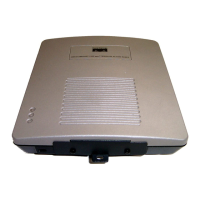
Do you have a question about the Cisco Aironet AIR-AP1200 and is the answer not in the manual?
| Model | AIR-AP1200 |
|---|---|
| Device Type | Wireless Access Point |
| Frequency Bands | 2.4 GHz, 5 GHz |
| Maximum Data Rate | 54 Mbps |
| Power over Ethernet (PoE) | Yes |
| Weight | 1.5 lbs |
| Encryption Algorithm | WEP, WPA, WPA2 |
| RAM | 32 MB |
| Flash Memory | 8 MB |
| Wireless Standards | 802.11b, 802.11g |
| Antenna Type | External |
| Data Link Protocol | Ethernet |
| Authentication Method | RADIUS, EAP |
| Compliant Standards | IEEE 802.11b, IEEE 802.11g |
| Power Source | PoE or AC adapter |
| Operating Temperature | 32 to 104 °F |
| Humidity | 10 - 95% (non-condensing) |
| Security Features | MAC Filtering, SSID Broadcast Control |
| Ethernet Ports | 1 x 10/100Base-TX |
Target audience for the guide, requiring networking experience.
Guide provides info for installation and basic configuration of the access point.
Outlines the structure of the guide by chapters and their content.
Explains formatting conventions for commands like bold, italics, and brackets.
Explains formatting for terminal sessions and system displays.
Explains the meaning of symbols like Tip, Note, Caution, and Warning.
Lists Cisco IOS Software Configuration Guide for Cisco Aironet Access Points.
Information on accessing Cisco documentation via the Cisco.com website.
Instructions on how to order Cisco documentation.
Provides access to Cisco's online Security Vulnerability Policy portal.
Lists available security advisories and notices for Cisco products.
Instructions on how to report security vulnerabilities to Cisco PSIRT.
Accessing Cisco's online support and documentation website for troubleshooting.
Using the CPI tool to locate product serial numbers for service requests.
Describes the location and information on the access point serial number label.
Using the online tool to open S3 and S4 service requests.
Contacting Cisco TAC by telephone for S1/S2 service requests.
Defines Severity 1 service requests as network "down" or critical impact.
Defines Severity 2 service requests as degraded network operation.
Defines Severity 3 service requests as impaired network performance.
Defines Severity 4 service requests as requiring information or assistance.
Details the hardware features of the access point.
Describes common wireless network configurations.
Guidelines for safe operation and use of the access point.
Steps for unpacking the access point and its components.
General guidelines to ensure optimal performance.
Pre-installation steps and familiarization with the device.
Summarizes the key operations required during access point installation.
Step-by-step guide for connecting 2.4-GHz antennas.
Step-by-step guide for connecting 5-GHz external antennas.
Details the options for powering the access point via Ethernet.
Describes the power-up sequence and LED indicators.
Information needed before starting the configuration process.
Methods for obtaining and assigning an IP address.
Steps to connect to the AP console port for local configuration.
Guide to assigning fundamental settings via Express Setup.
Steps for configuring security settings on the access point.
Steps to assign an IP address to the BVI using the CLI.
Steps to access the CLI via Telnet.
Steps to start the browser and access the management system.
Consistent techniques for presenting and saving configuration.
Explains action buttons like Apply, Cancel, Refresh, Back.
Lists prohibited characters for entry fields in the web interface.
How to access online help via help icon and topic selection.
Describes different command modes and their usage.
How to get help using question marks and keywords.
How to use abbreviated commands for efficiency.
Using 'no' and 'default' commands to manage features.
Interpreting error messages encountered in the CLI.
Managing and recalling previously entered commands.
Features for editing command lines.
Filtering command output using keywords like begin, include, exclude.
Methods for accessing the command-line interface.
General information about mounting the access point.
Instructions for mounting on walls or ceilings.
Instructions for mounting below a suspended ceiling.
Instructions for mounting above a suspended ceiling.
Steps to attach AP to the mounting bracket.
How to use the security hasp and padlock for securing.
Summarizes the procedure for upgrading the 2.4-GHz radio.
Steps to open the access cover for radio upgrade.
How to remove a blank spacer card.
Steps to remove an existing 2.4-GHz radio card.
Steps to install a new 2.4-GHz radio card.
How to find the IOS software version.
Summarizes the procedure for upgrading the 5-GHz radio module.
Steps to remove the 5-GHz radio access cover.
Steps to remove an existing 5-GHz radio module.
Steps to install a new 5-GHz radio module.
How to use LEDs to assess the unit's status.
Checking common causes of lost connectivity.
Procedures to reset the AP to factory defaults.
Procedures to reload the access point firmware image.
How to obtain the access point image file.
Recommended URL for downloading TFTP server software.
Warning about operating near explosive devices.
Warning about antenna placement for FCC RF exposure limits.
Warning about working on system during lightning.
Warning to read installation instructions before connecting power.
Warning about the building's circuit protection rating.
FCC compliance statement for Class B digital devices.
Canadian compliance statement for Interference-Causing Equipment Regulations.
Statement of conformity with EU R&TTE Directive 1999/5/EC.
Compliance statement for RF exposure limits.
Avoid interference guidelines for Japan.
Administrative rules for APs in Taiwan.
Special information for operating APs in Brazil.
Specifies the physical dimensions of the access point.
Describes the meaning of the top panel LEDs.
Details the types and locations of connectors.
Specifies the input voltage requirements.
Lists the power consumption for different configurations.
Specifies the operating temperature range.
Lists the weight of the access point with different configurations.
Lists power output levels for different radios and modulations.
Describes antenna types and gain for different radio modules.
Specifies frequency bands for different radio modules.
Lists modulation techniques used by the radios.
Lists supported data rates for different radios.
Provides typical indoor and outdoor operating ranges.
Details compliance with UL 2043 and other safety standards.
Lists radio frequency approvals for various regions.
Lists IEEE 802.11b/g/a channels and regulatory domains.
Lists max power and antenna gains by domain.
Pinouts for RJ-45 to DB-9 serial console cable.
Definition of the IEEE 802.11 standard.
Definition of an access point.
Definition of Dynamic Host Configuration Protocol.
Definition of an Internet Protocol address.
Definition of Service Set Identifier.
Definition of Wired Equivalent Privacy.
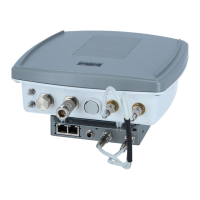
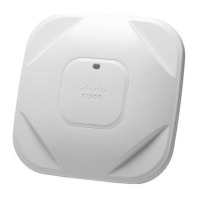
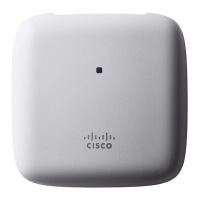
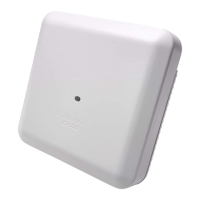
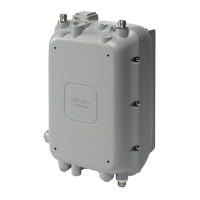
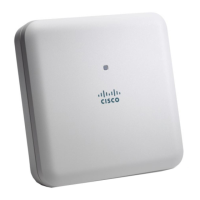





